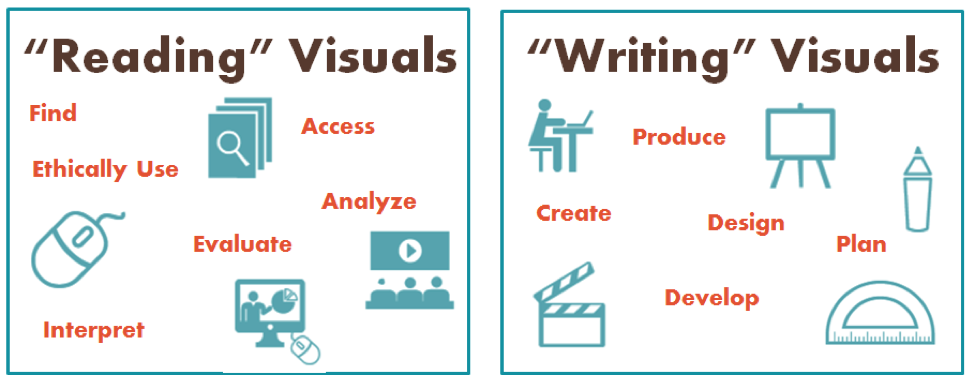Lesson 1: Introduction to Visual Literacy
So what is visual literacy?
To learn what visual literacy is, who came up with the term “visual literacy”, and the foundations of the field, please read Peter Felten’s article on visual literacy:
- Felten, P. (2008). Visual Literacy, Change: The Magazine of Higher Learning, 40(6), 60-64, DOI: 10.3200/CHNG.40.6.60-64
You can access this article through the Virginia Tech University Libraries by following this link.
In his article, Peter Felten (2008) states that “visual literacy involves the ability to understand, produce, and use culturally significant images, objects, and visible actions “(p. 60). Similarly, Susan Metros (2008, p. 103) defines visual literacy “as the ability to decode and interpret (make meaning from) visual messages and also to be able to encode and compose meaningful visual communications.”
Both definitions include a notion of both reading (using, analyzing, interpreting, and evaluating) and writing (designing and producing) visuals. The Association of College & Research Libraries (2011, para. 2) also emphasizes the importance of both consuming and contributing visuals as they define visual literacy as:
A set of abilities that enables an individual to effectively find, interpret, evaluate, use, and create images and visual media. Visual literacy skills equip a learner to understand and analyze the contextual, cultural, ethical, aesthetic, intellectual, and technical components involved in the production and use of visual materials. A visually literate individual is both a critical consumer of visual media and a competent contributor to a body of shared knowledge and culture.
In this course, you will therefore get the chance to both read (use, analyze, interpret, and evaluate) and write (design and produce) visuals.
